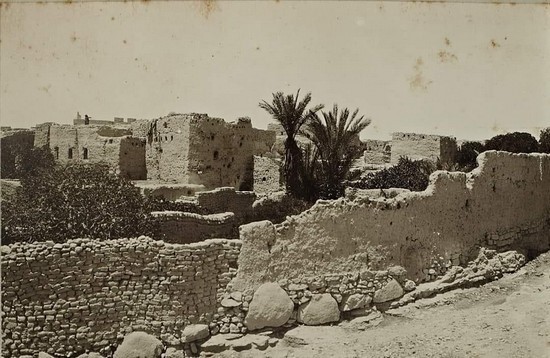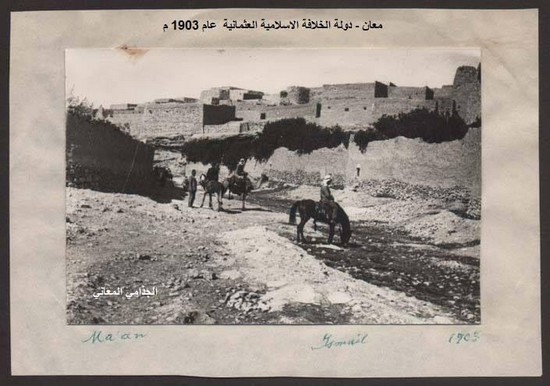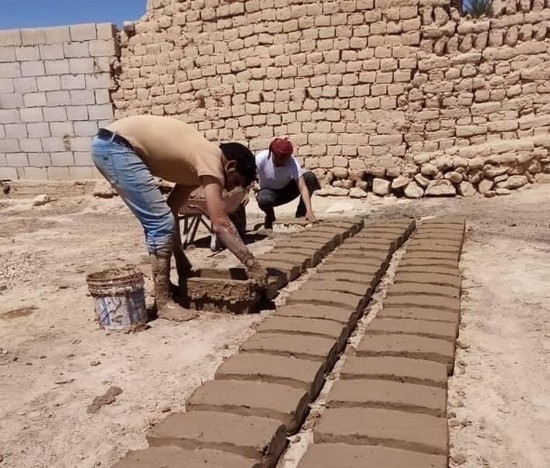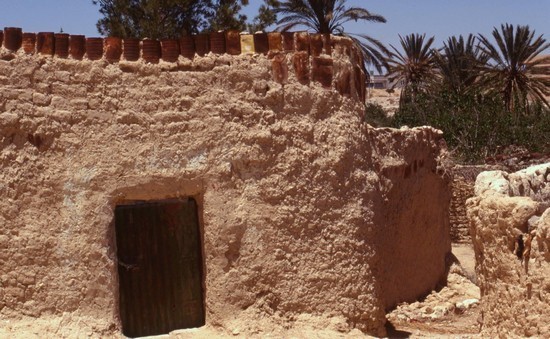AMMAN — Tucked
away in the town of Maan, located around 210km south of the capital, three
distinctive questions steered a conversation between two friends. Did you plant
your Qasayel (garden)? Did you water it? And finally, the most important
inquiry, did you sit with it?
اضافة اعلان
Qasayel have long been an
object of fascination for those interested in Jordan’s rich architectural
heritage. While many locals are unfamiliar with them, to Maanis, the gardens
were a piece of heaven on earth that had to be nurtured and cherished.

“People thought the more time
you spend in the Qasayel, the better the harvest,” said Saleh Abu Taweleh, a
journalist and researcher of Maan.
“The gardens are souls that
needed company and attention,” 50-year-old Abu Taweleh mused.
Qasayel is just one of the
many names for Maan’s extraordinary gardens. Known for their unique mud-brick
walls and a thriving agrarian culture, the Qasayel were once an integral part
of the lives of the local community.
For the residents of Maan,
Qasayel were not only a source of livelihood but also a place of memories and
community.
“People thought the more time you spend in the Qasayel, the better the harvest. … The gardens are souls that needed company and attention.”
Abu Taweleh recalls,
"Qasayel were where we gathered, played, and picked fruits as kids. The
best fruits were the ones in Shami Maan Qasayel."
Sustainable architectureEven beyond the local
community, Qasayel piqued the interest of many for their sustainable
architecture.

Ammar Khammash, one of
Jordan’s renowned architects, was particularly captivated by the Qasayel
gardens and their "magical mud". In fact, in the 1980s, he returned
to Jordan to explore the country's natural and architectural environment and
the role they played in shaping each other.
The mud bricks of Qasayel are
a testament to sustainable architecture, noted Khammash. “They don’t produce
carbon dioxide emissions or pollute the atmosphere with smoke, unlike cement
which burns and consumes a lot of energy, destroying the atmosphere.”
The gardens were built over a
source of water that flowed from the Shara Mountains and through the town,
providing fertile land and a cooler microclimate noted Khammash.

"The mud provided the
best insulation, surpassing any modern concrete substitutes, making Qasayel
comfortable even on the hottest of summer days," he said.
Advent of modernityNevertheless, the advent of
modernity and a shift towards urbanization in Jordan led to the decline of the
Qasayel gardens.
In the late 1960s, the
economy started moving away from agriculture, people sought government jobs,
and some enrolled in the army. Pilgrims started traveling by car and no longer
stopped in the city, making it impossible for families to rely on agriculture
for income.
"It is possible to use modern technology to improve mud bricks. A university specializing in clay research could carry out experiments and revitalize the use of mud in construction. … Given the proper care and attention, mud buildings can thrive again."
More importantly, mixing and
pressing bricks required extensive labor and time, while cement blending
machines could be operated by one worker, saving time and money.
Despite this, Khammash
believes that the Qasayel gardens have the potential for a resurgence.

"It is possible to use
modern technology to improve mud bricks. A university specializing in clay
research could carry out experiments and revitalize the use of mud in
construction," said Khammash. "Given the proper care and
attention, mud buildings can thrive again."
As of yet, there is no
official designation as a protected area or historical site for Qasayel,
Khammash said. “But the memories and significance of these remarkable gardens
will endure in the hearts of those who experienced them.”
Read more Features
Jordan News



